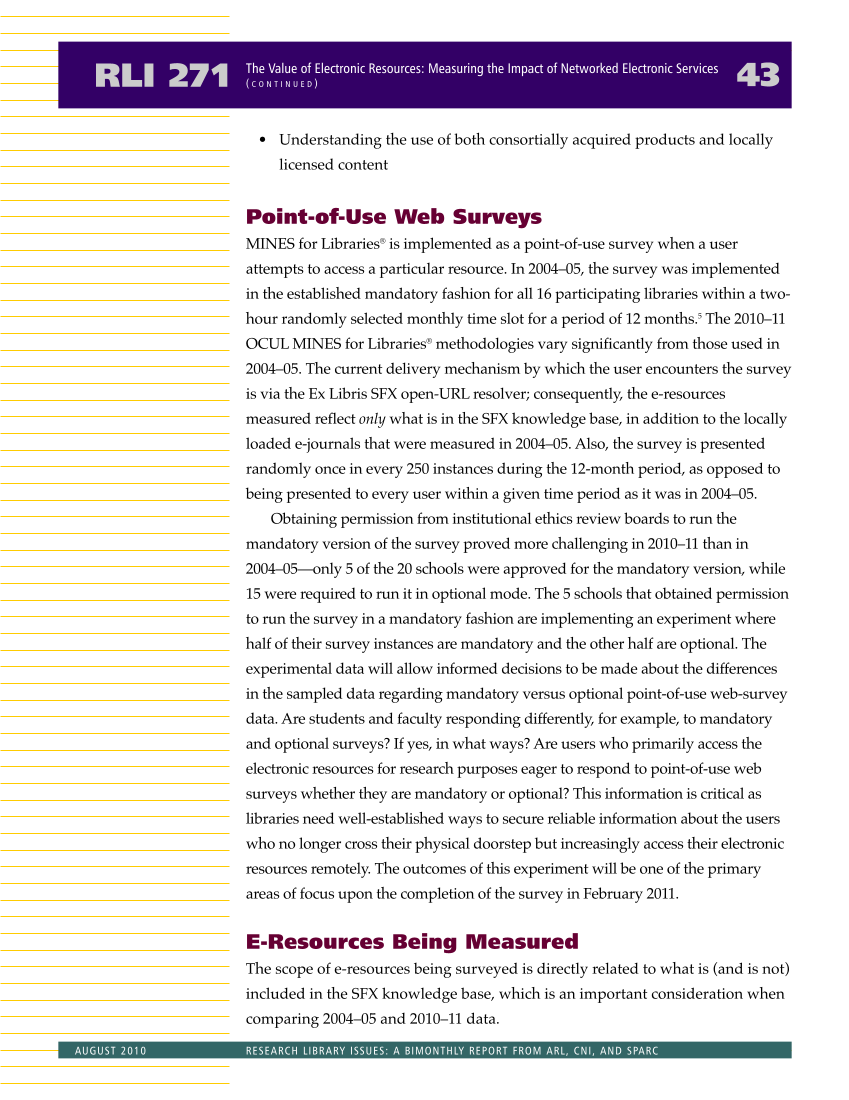• Understanding the use of both consortially acquired products and locally licensed content Point-of-Use Web Surveys MINES for Libraries® is implemented as a point-of-use survey when a user attempts to access a particular resource. In 2004–05, the survey was implemented in the established mandatory fashion for all 16 participating libraries within a two- hour randomly selected monthly time slot for a period of 12 months.5 The 2010–11 OCUL MINES for Libraries® methodologies vary significantly from those used in 2004–05. The current delivery mechanism by which the user encounters the survey is via the Ex Libris SFX open-URL resolver consequently, the e-resources measured reflect only what is in the SFX knowledge base, in addition to the locally loaded e-journals that were measured in 2004–05. Also, the survey is presented randomly once in every 250 instances during the 12-month period, as opposed to being presented to every user within a given time period as it was in 2004–05. Obtaining permission from institutional ethics review boards to run the mandatory version of the survey proved more challenging in 2010–11 than in 2004–05—only 5 of the 20 schools were approved for the mandatory version, while 15 were required to run it in optional mode. The 5 schools that obtained permission to run the survey in a mandatory fashion are implementing an experiment where half of their survey instances are mandatory and the other half are optional. The experimental data will allow informed decisions to be made about the differences in the sampled data regarding mandatory versus optional point-of-use web-survey data. Are students and faculty responding differently, for example, to mandatory and optional surveys? If yes, in what ways? Are users who primarily access the electronic resources for research purposes eager to respond to point-of-use web surveys whether they are mandatory or optional? This information is critical as libraries need well-established ways to secure reliable information about the users who no longer cross their physical doorstep but increasingly access their electronic resources remotely. The outcomes of this experiment will be one of the primary areas of focus upon the completion of the survey in February 2011. E-Resources Being Measured The scope of e-resources being surveyed is directly related to what is (and is not) included in the SFX knowledge base, which is an important consideration when comparing 2004–05 and 2010–11 data. RLI 271 43 The Value of Electronic Resources: Measuring the Impact of Networked Electronic Services ( C O N T I N U E D ) AUGUST 2010 RESEARCH LIBRARY ISSUES: A BIMONTHLY REPORT FROM ARL, CNI, AND SPARC



















































